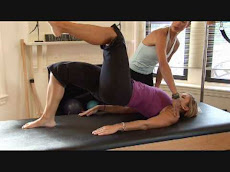Healthy Meals for Weight Loss
Smart dietary guidelines
The American Heart Association updated its recommended dietary guidelines in 2000. These guidelines are suitable for most adults.
* Eat 5 or more fresh fruits and vegetables each day.
* Eat 6 or more servings of grains (preferably whole grains) each day.
* Eat fat-free and low-fat dairy, legumes, seafood, and lean meats.
* Avoid foods with more than 2 grams of saturated fat per serving.
* Balance your caloric intake with your energy expenditure.
* Limit junk food, which is high in simple carbohydrates and low in nutrition.
* Limit foods high in saturated fat and cholesterol. Eat less than 6 grams of salt each day.
General food preparation and meal planning tips: Try to eat servings of fruits and vegetables at every meal. Besides being delicious, they are full of nutrients and fiber. They may even help prevent certain cancers.
* Boil, steam, bake, roast, or broil foods rather than frying in fat.
* Use unsaturated fats, such as vegetable oils, rather than saturated fats such as butter, shortening, and lard.
* Use olive oil spray rather than cooking oils to prepare foods.
* Eat white meat chicken or turkey, lean meat, fish, or seafood. Trim the skin from poultry.
* Use low-fat or non-fat dairy products.
* To season foods, choose lemon or lime juice, vinegar, low-sodium soy sauce, plain tomato sauce, salsa and other sauces low in fat, or mustard. Use garlic, onions, ginger, and herbs and spices to flavor foods.
* Avoid high-fat and high-calorie condiments such as mayonnaise, oil, ketchup, salad dressing, or prepared sauces.
* Drink seltzer, water, caffeine-free soda, tea, or coffee with meals.
Breakfast suggestions
* 1 cup of juice or fruit
* Egg whites or an egg substitute scrambled or prepared as an omelet in olive oil spray
* Oatmeal or any sugar-free cereal with 6-8 ounces of skim milk
* Low-fat cream cheese, low-fat cottage cheese, or non-fat yogurt
* Caffeine-free tea or coffee
Lunch suggestions
* 1/2 cup of cooked vegetables, such as peas, string beans, asparagus, broccoli, summer squash, escarole, cauliflower, brussels sprouts, or carrots
* 1/2 cup of a leafy vegetable, such as spinach, kale, or chard
* Green salad, plain or seasoned with fat-free dressing, vinegar, lemon, or any combination of these (no oil)—include greens and raw vegetables such as tomato, bell peppers, cucumber, sprouts, radish, onion, cabbage, mushrooms, and celery
* 1/2 cup whole-grain pasta in meat-free tomato sauce
* Sandwiches made of whole-grain or sourdough bread
o 2 ounces of water-packed tuna or salmon
o 2 slices of a low-fat cold cut or deli meat
o 1-2 ounces of low-fat cheese
Supper suggestions
* 1/2 cup of cooked vegetables, such as peas, string beans, asparagus, broccoli, summer squash, cauliflower, brussels sprouts, or carrots
* 1/2 cup of a leafy vegetable, such as spinach, kale, or chard
* Green salad, plain or seasoned with fat-free dressing, vinegar, lemon, or any combination of these (no oil)—include greens and raw vegetables such as tomato, bell peppers, cucumber, sprouts, radish, onion, cabbage, mushrooms, and celery
* 1/2 chicken breast, baked, or 4 slices of turkey, skin removed
* White fish, such as snapper or fillet of sole, baked or steamed in plain tomato sauce, lemon or both
* 2 slices of whole-grain or sourdough bread or 1/2 cup of a whole grain such as brown rice
* 1/3 cup (or less) of fat-free yogurt or fat-free sour cream
* For dessert
o 1 small slice of cake or 1 cookie, low-fat or fat-free and cholesterol-free
o 1/2 cup of fat-free ice cream or fat-free frozen yogurt
o Fresh fruit
If you choose to drink alcohol, do so in moderation (no more than 2 drinks per day for men or 1 drink per day for women).
To satisfy hunger between meals, eat unlimited quantities of celery, lettuce, mushrooms, green or red peppers, asparagus, cauliflower, cucumber, and broccoli.
Eating away from home
When eating in a restaurant, plan ahead. Think about ordering low-fat, low-calorie foods. Remember that most restaurants serve portions much larger than an accepted serving size.
* Ask for a doggy bag or take-out container when you order. As soon as the food comes, set aside half (or more) for future meals. Then eat what is left on your plate. This will help keep you from overeating.
* Skip the breadbasket and the appetizer.
* Ask for foods to be prepared without frying or sauces.
* Avoid high-fat side orders such as french fries, cole slaw, and garlic bread.
* Order salad dressings on the side and dip your fork in the dressing, then spear the salad.
Sunday, July 6, 2008
Subscribe to:
Post Comments (Atom)



No comments:
Post a Comment